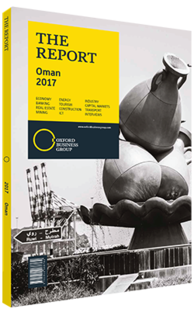Oman makes efforts to revolutionise date farming
Among the most ambitious projects being undertaken in Oman’s agricultural sector is the Million Date Palm Plantation Project, which was commissioned by the Royal Court. The initiative uses the latest advances in agricultural science to cultivate the fruit, but also aims to serve as a focus for a transformation in the way the national crop is harvested, processed and marketed. By May 2016, 11 farms were growing a total of 600,000 palms in six governorates, with preparations for the next phase – involving the planting of the remaining 400,000 palm trees – under way.
Palm Pilots
Besides achieving sheer scale, the project is also challenging accepted traditions. Out of more than 200 species of date that are native to Oman, the scheme focuses on four varieties: Khalas Al Dhahira, Bunarinja, Majhool and Al Fardh. Majhool dates are new to Oman, but are extremely popular in international markets. The Al Fardh variety is being used for 800,000 of the palms.
With the exception of the Bunarinja variety, MAF scientists are using tissue culture in laboratories to grow up to 100 new saplings from each date palm. Traditional methods would result in 10-12 offshoots per tree. The process takes two years, but the result is that the new saplings are identical to the mother tree. Cultivating the plants in laboratory conditions also prevents them falling prey to disease.
Bearing Fruit
Of the first crop of palms, approximately 15,000 were producing fruit in 2016, resulting in a 300-tonne harvest. The palms, which typically live for 30-40 years, reach their peak at age 10, when each tree can be expected to produce 100 kg.
In August 2014 the MAF estimated that there were 7.6m date palms across Oman growing on 24,120 ha, which accounted for 78% of all land under fruit cultivation in the sultanate. Annual production grew from 309,686 tonnes in 2013 to 317,404 tonnes in 2014 and 325,314 tonnes in 2015, according to the National Centre for Statistics and Information. Some varieties are grown for human consumption while others are harvested for animal feed.
Date palm plantations are also making smarter use of water. The sultanate receives less than 100 mm in average annual rainfall, with surface and groundwater accounting for 87% of its water resources, while the remainder is produced through desalination and by treating wastewater. According to research by Sultan Qaboos University (SQU), 94% of Oman’s groundwater is used by agriculture, with farms in the Al Batinah region alone accounting for 36%. Overuse of public wells by farms with diesel or electric pumps has lowered the water table in some areas, causing saltwater intrusion. In the Barka area alone, scientists say this phenomenon led to 116 wells being closed in a 12-year period from 1993, meaning 2714 ha of agricultural land was lost and saltwater intrusion has now reached 12 km inland.
Irrigation Methods
MAF scientists calculated that a typical date palm cultivated using traditional flood irrigation techniques will use 60 litres of water a day in cooler months and up to 210 litres daily during the height of summer. However, the use of subsurface drip irrigation (SDI) cuts consumption dramatically. By delivering water through pipes directly to the trees’ roots, it prevents the evaporation, percolation and loss normally incurred as water moves through irrigation furrows associated with traditional watering methods. Scientists say the use of SDI reduced water consumption by 60% in a plantation in Saudi Arabia, while also boosting fruit yields by 25%.
The government is hoping that the Million Date Palm Plantation Project will serve as a focus for investors wishing to build processing plants. “There is potential for growth in the production of date syrup, for instance, as a sugar substitute,” Rhonda Janke, of SQU’s Crop Science Department, told OBG. “Date syrup can be seen as a healthy ingredient, and I believe marketing of Omani dates as an organic product is a trend worth watching if official labelling and definition are introduced.”
You have reached the limit of premium articles you can view for free.
Choose from the options below to purchase print or digital editions of our Reports. You can also purchase a website subscription giving you unlimited access to all of our Reports online for 12 months.
If you have already purchased this Report or have a website subscription, please login to continue.

